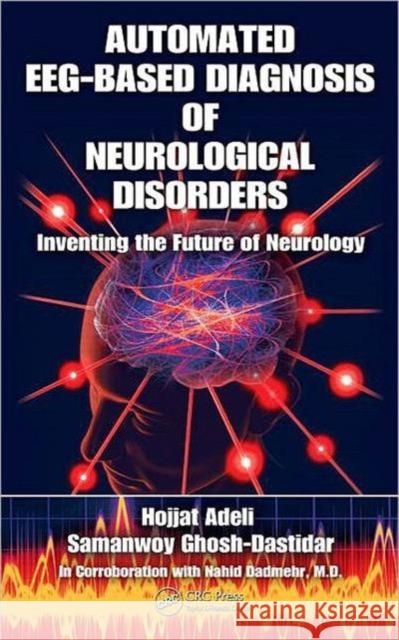Automated Eeg-Based Diagnosis of Neurological Disorders: Inventing the Future of Neurology » książka
Automated Eeg-Based Diagnosis of Neurological Disorders: Inventing the Future of Neurology
ISBN-13: 9781439815311 / Angielski / Twarda / 2010 / 423 str.
Automated Eeg-Based Diagnosis of Neurological Disorders: Inventing the Future of Neurology
ISBN-13: 9781439815311 / Angielski / Twarda / 2010 / 423 str.
(netto: 975,56 VAT: 5%)
Najniższa cena z 30 dni: 1007,48
ok. 22 dni roboczych.
Darmowa dostawa!
Based on the authors groundbreaking research, Automated EEG-Based Diagnosis of Neurological Disorders: Inventing the Future of Neurology presents a research ideology, a novel multi-paradigm methodology, and advanced computational models for the automated EEG-based diagnosis of neurological disorders. It is based on the ingenious integration of three different computing technologies and problem-solving paradigms: neural networks, wavelets, and chaos theory. The book also includes three introductory chapters that familiarize readers with these three distinct paradigms. After extensive research and the discovery of relevant mathematical markers, the authors present a methodology for epilepsy diagnosis and seizure detection that offers an exceptional accuracy rate of 96 percent. They examine technology that has the potential to impact and transform neurology practice in a significant way. They also include some preliminary results towards EEG-based diagnosis of Alzheimer s disease. The methodology presented in the book is especially versatile and can be adapted and applied for the diagnosis of other brain disorders. The senior author is currently extending the new technology to diagnosis of ADHD and autism. A second contribution made by the book is its presentation and advancement of Spiking Neural Networks as the seminal foundation of a more realistic and plausible third generation neural network. "
Based on the authors' ground-breaking research, this book presents a novel approach for automated EEG-based diagnosis of neurological disorders such as epilepsy. The authors have developed an innovative method that has been shown to diagnose epilepsy and detect seizure with an accuracy rate of 96%. Their method is based on the adroit integration of three computing and problem solving paradigms: neural networks, wavelets, and chaos theory. The text introduces each of these computing paradigms along with a number of sophisticated mathematical algorithms. It concludes with applications of the method to epilepsy and to Alzheimer's disease.











